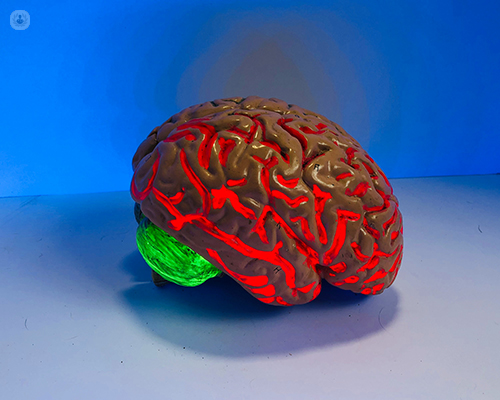Epilepsy and its seizures: causes, types, and management
Written in association with:Epilepsy is a neurological condition that is characterised by recurrent seizures. In this article, leading London neurologist Dr Kushan Karunaratne explains all you need to understand about epilepsy and epileptic seizures.

What are epileptic seizures?
Seizures are bursts of neuroelectric activity that can interrupt function in a variety of ways. Epilepsy can develop at any age, but typically initially manifests either in childhood or in older age, and tends to be a lifelong condition.
What causes epilepsy?
Many causes can contribute to a diagnosis of epilepsy. It can be genetically passed on or can be caused by strokes, brain tumours, trauma, dementia, brain infections, or a lack of oxygen while being born. For most people with epilepsy, the cause is unknown.
Sometimes seizures can be a singular event, but those who experience a seizure for the first time should still seek medical attention to investigate for any underlying causes.
What are the types of epileptic seizures?
Some types of epileptic seizures include:
- Focal seizures with preserved awareness previously known as simple partial seizures. With these seizures people don’t lose consciousness or awareness. They may experience unusual feelings such as feeling a flip-flop in the stomach (like when on a roller coaster ride or plane suddenly descending), a déjà vu, tingling, unusual tastes or smells, or a stiffness and twitching in a part of the body.
- Focal seizures with impaired awareness previously known as complex partial seizures. With these seizures people are not aware of having a seizure. They may suddenly look blank/vacant, will not be responsive during the event and will not retain memories of it. They may make involuntary and repetitive movements like rubbing their hands, swallowing or smacking their lips.
- Focal to bilateral tonic-clonic seizures, previously known as ‘grand mal seizures’, are what most people are familiar with when they think of an epileptic seizure. It happens in two stages, the tonic, where the individual loses consciousness and their body goes rigid, and the clonic, where there is involuntary jerking and shaking. These seizures are dangerous and people can sustain injury. Some individuals may bite their tongue or lose control of their bladder and bowels. They tend to last a few minutes, and afterwards, the individual will likely feel drained and confused with no recollection of what just happened. In the case of constant or prolonged seizures, it is advised to seek emergency medical attention immediately.
What can trigger or provoke epileptic seizures?
For most people with epilepsy, there may not need to be a trigger for a seizure, but for others, they may triggered by a lack of sleep, too much stress, drinking alcohol or using substances, menstruation, or flashing lights.
How is epilepsy diagnosed?
Individuals are usually only diagnosed as having epilepsy if they have more than one seizure. Sometimes epilepsy is diagnosed following the first seizure if there is a reason for an increased liability for further seizures (e.g. abnormal MRI brain scan or electroencephalogram test).
The diagnostic process involves a neurologist asking a series of investigative questions, neurological examination and tests. The most common tests are MRI brain scans to see the structure of the brain, and an electroencephalogram (EEG) to check on the brain wave activity. Genetic testing and specialised blood tests are also sometimes performed.
How is epilepsy treated?
Epileptic seizures can be managed to be less frequent or to be stopped completely with a variety of methods:
- Anti-seizure medications (ASMs), which help most patients and work by altering the levels of brain chemicals.
- Surgical removal or destruction of the part of the brain that causes seizures, which is an option that is explored primarily if ASMs are ineffective.
- An implanted electrical device to control seizures. This could be a device implanted in the chest, similar to a pacemaker, called vagus nerve stimulation, where the electrical signals in the brain are altered by wires that go under the skin and connect to the vagus nerve in the neck.
- A specific diet, called a ketogenic diet, which is high in fats and low in carbohydrates and protein, and affects the chemicals in the brain. This method may be used for children and adults with severe epilepsy.
Individuals with recognisable triggers for their seizures should take care to avoid or reduce their exposure to those triggers.
If you have experienced seizures and would like to explore treatment and formal diagnosis, consult with Dr Karunaratne via his Top Doctors profile.


